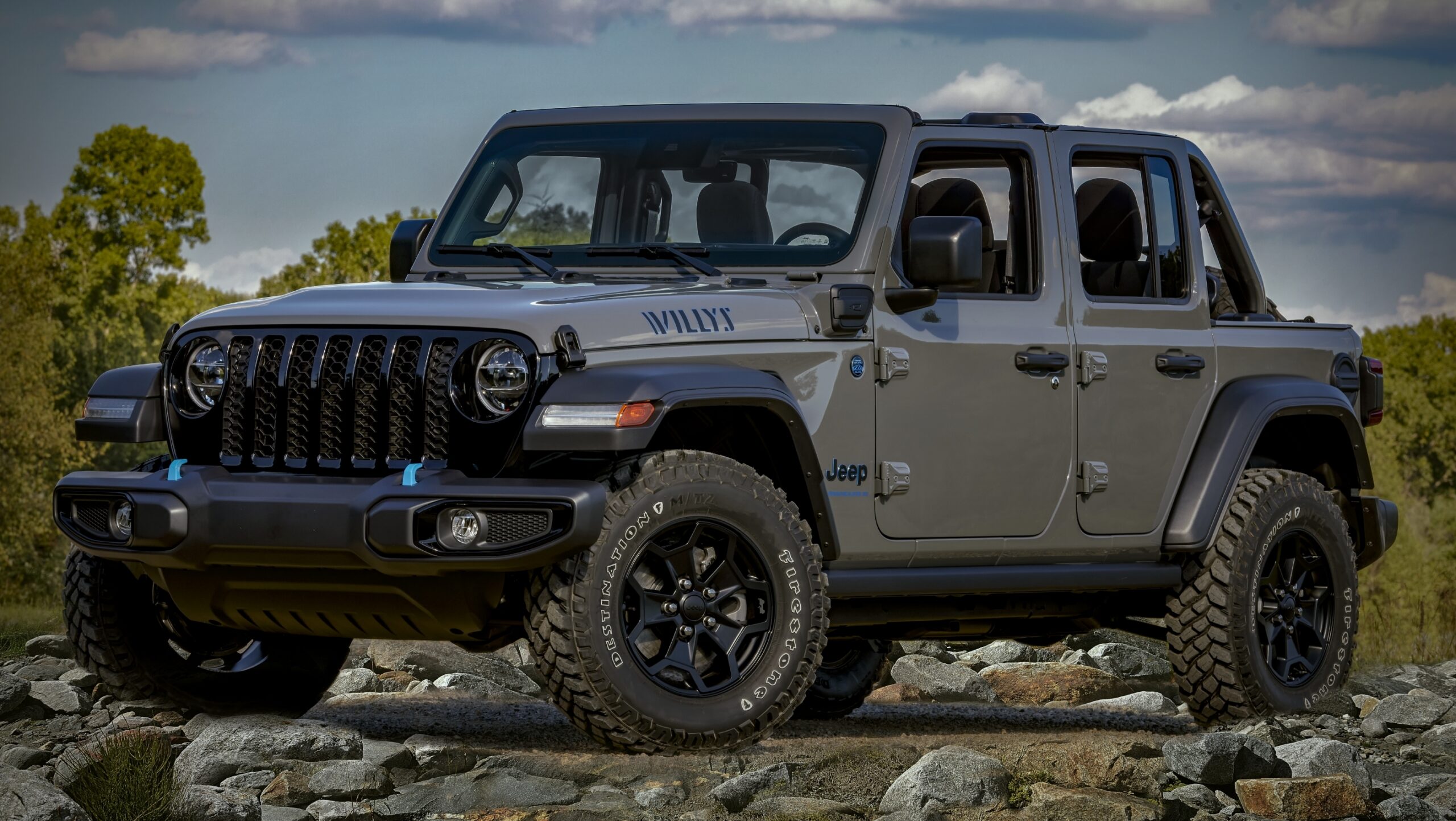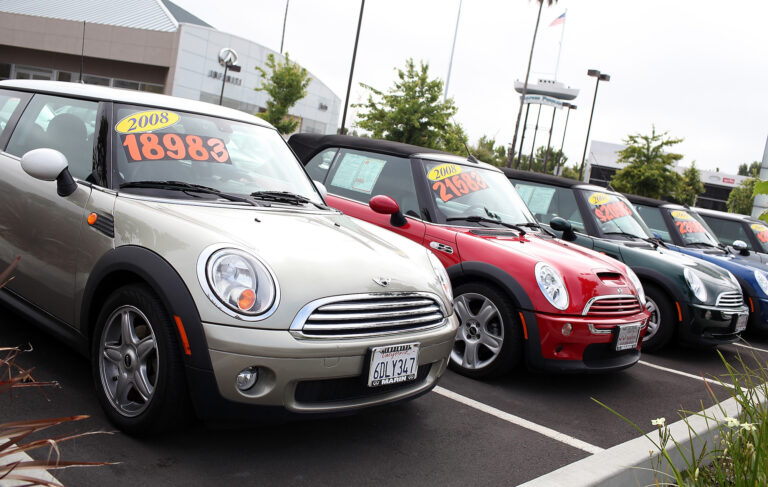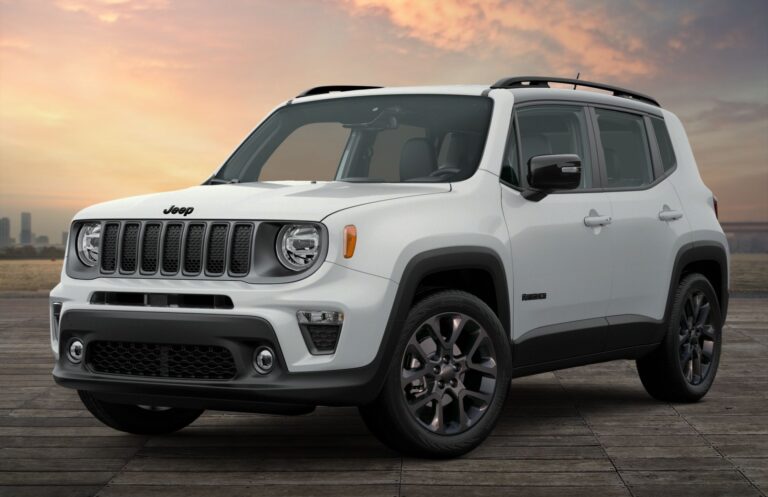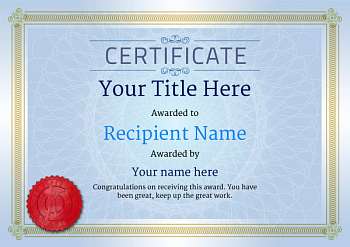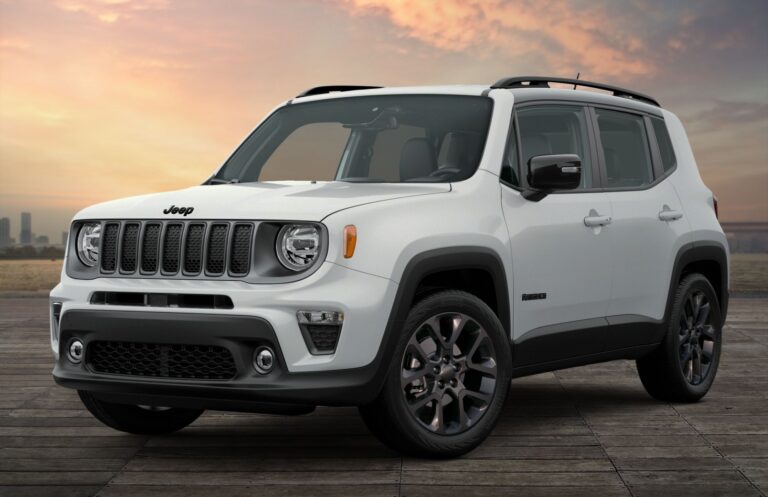Jeep Wrangler Versus Toyota 4Runner: A Definitive Off-Road Showdown
Jeep Wrangler Versus Toyota 4Runner: A Definitive Off-Road Showdown jeeps.truckstrend.com
In the rugged landscape of off-road vehicles, two names consistently rise to the forefront of discussion: the Jeep Wrangler and the Toyota 4Runner. Both are revered for their legendary capabilities, robust construction, and undeniable appeal to adventurers and enthusiasts alike. However, despite their shared purpose of conquering challenging terrains, they represent distinct philosophies in their approach to design, performance, and daily usability. This comprehensive guide aims to dissect the nuances between these two iconic SUVs, providing an in-depth comparison to help prospective owners determine which vehicle best aligns with their adventurous spirit and practical needs.
The decision between a Wrangler and a 4Runner isn’t merely about choosing an SUV; it’s about embracing a lifestyle. Are you a purist seeking unadulterated off-road prowess and open-air freedom, or do you prefer a blend of formidable capability with everyday comfort and Toyota’s renowned reliability? Understanding their core differences is paramount to making an informed choice, as each excels in specific areas while making certain compromises.
Jeep Wrangler Versus Toyota 4Runner: A Definitive Off-Road Showdown
Heritage and Design Philosophy: Roots of Ruggedness
The Jeep Wrangler boasts a lineage directly tracing back to the military Willys MB of World War II, embodying a pure, uncompromised off-road DNA. Its design philosophy has always centered around maximal articulation, approach/departure angles, and the ability to conquer the most extreme trails. This commitment is evident in its solid axles, body-on-frame construction, and the iconic removable doors, roof, and fold-down windshield, offering an unparalleled open-air driving experience. The Wrangler is a tool designed primarily for the trail, with on-road manners being a secondary consideration.
In contrast, the Toyota 4Runner emerged from the lineage of Toyota’s Hilux pickup truck, evolving into a highly capable, yet more refined, family-friendly SUV. While undeniably a body-on-frame off-roader with serious chops, its design ethos balances ruggedness with practicality and long-term durability. The 4Runner aims to be a reliable companion for overland journeys, family trips, and daily commutes, all while maintaining the ability to tackle challenging trails when called upon. It prioritizes comfort, cargo space, and a reputation for bulletproof reliability that has become a benchmark in the automotive industry.
Off-Road Capability: Trail Blazers Compared
This is where the gloves come off. Both vehicles are highly capable, but their strengths lie in different types of off-roading.
Jeep Wrangler:
- Strengths: Unmatched articulation thanks to solid front and rear axles, shorter wheelbase (especially 2-door models) for tight maneuvers, disconnectable front sway bars (Rubicon) for increased wheel travel, excellent approach, departure, and breakover angles. The Rubicon trim is specifically engineered for extreme rock crawling, featuring heavy-duty axles, locking differentials, and a low-range transfer case with an impressive crawl ratio. Its factory-equipped capabilities are often superior for highly technical trails.
- Weaknesses: Less stable at high speeds on rough terrain due to solid axles, can be bouncy, and less comfortable for long-distance off-road travel (overlanding).
![]()
Toyota 4Runner:
- Strengths: Highly reliable and durable drivetrain, excellent ground clearance, available Multi-Terrain Select (MTS) and Crawl Control systems for managing various terrains, and a Torsen limited-slip differential (on some trims). The TRD Off-Road and TRD Pro models add features like a locking rear differential, upgraded suspension (Bilstein or Fox shocks), and larger tires. Its independent front suspension provides better high-speed stability and comfort on rough roads, making it ideal for overlanding and faster trail driving.
- Weaknesses: Independent front suspension limits maximum articulation compared to the Wrangler’s solid axle setup, potentially hindering extreme rock crawling. Its longer wheelbase and overall larger size can make tight maneuvers more challenging than a 2-door Wrangler.
On-Road Driving Dynamics: Daily Commute Considerations
The significant differences in their off-road design translate directly to their on-road manners.
Jeep Wrangler:
- The Wrangler’s on-road experience is distinctly "Jeep." It features a relatively unrefined ride, more body roll in corners, and can be noisy, especially with aggressive off-road tires and soft tops. Steering can feel vague, and wind noise is prominent. While modern Wranglers are significantly more comfortable than their predecessors, they still prioritize ruggedness over highway cruising refinement. The 4xe hybrid model offers a smoother, quieter electric-only mode for city driving.
Toyota 4Runner:
- The 4Runner offers a more composed and comfortable ride on pavement. While still unmistakably a body-on-frame SUV with some truck-like characteristics, it handles better, feels more stable at highway speeds, and offers a quieter cabin. Its older 5-speed automatic transmission and naturally aspirated V6 engine provide adequate, though not exhilarating, power for daily driving and highway passing. It’s a vehicle that can comfortably serve as a family hauler during the week and an adventure rig on the weekends.
Interior, Comfort, and Practicality: Beyond the Trail
Jeep Wrangler:
- Interior: The Wrangler’s interior is utilitarian and designed for durability and easy cleaning, often featuring washable floors with drain plugs. Modern iterations have significantly improved material quality and added more technology (e.g., Uconnect infotainment system with large touchscreens). However, passenger and cargo space, especially in the 2-door model, are limited. The appeal often lies in the removable roof and doors, which transform the driving experience.
- Comfort: Front seats are generally comfortable, but rear-seat space can be cramped, particularly in the 2-door. Noise levels are higher due to its design.
- Practicality: Excellent for those who value customization and open-air driving. Less practical for large families or those needing significant enclosed cargo space.
Toyota 4Runner:
- Interior: The 4Runner’s interior emphasizes durability and practicality. While not luxurious, materials are robust, and ergonomics are well-thought-out. It offers more passenger room, especially in the second row, and significantly more cargo space. A third-row option is available on some trims, though it’s quite small. Modern infotainment features are present, but the overall tech interface feels a bit dated compared to newer rivals.
- Comfort: The ride is smoother, and the cabin is quieter, making it more suitable for long road trips. Seats are supportive and comfortable.
- Practicality: A highly versatile SUV that can handle daily commutes, family duties, and weekend adventures with ease. Its cargo capacity and towing capabilities are superior to the Wrangler.
Powertrain and Fuel Economy: Under the Hood
Jeep Wrangler:
- Engines: Offers a diverse range:
- 3.6L Pentastar V6 (285 hp, 260 lb-ft) – standard, proven.
- 2.0L Turbo 4-cylinder (270 hp, 295 lb-ft) – more torque, better fuel economy.
- 2.0L Turbo 4-cylinder PHEV (4xe) (375 hp, 470 lb-ft) – plug-in hybrid with electric-only range, excellent torque.
- 6.4L V8 (Rubicon 392) (470 hp, 470 lb-ft) – for ultimate power.
- Transmission: Typically an 8-speed automatic.
- Fuel Economy: Varies significantly by engine and configuration. The 4xe offers the best efficiency (around 20-22 MPG combined with gas, plus 21 miles electric range), while the V8 is predictably thirsty. V6 and 2.0T typically range from 18-22 MPG combined.
Toyota 4Runner:
- Engine: Exclusively uses a 4.0L V6 (270 hp, 278 lb-ft).
- Transmission: An older 5-speed automatic.
- Fuel Economy: Consistently lower than the Wrangler, typically around 16 MPG city / 19 MPG highway / 17 MPG combined, regardless of trim. This is a significant drawback for many buyers.
Reliability, Durability, and Resale Value
Jeep Wrangler:
- Reliability: Historically, Jeep’s reliability has lagged behind Toyota. However, recent generations have shown improvements. Still, owners often report more minor electrical or fit-and-finish issues compared to Toyota.
- Durability: Components are designed to be robust for off-road abuse, but the sheer number of removable parts and features can lead to more potential points of failure over time.
- Resale Value: Excellent, especially for Rubicon models. The demand for Wranglers remains consistently high, ensuring strong depreciation resistance.
Toyota 4Runner:
- Reliability: Legendary. The 4Runner is renowned for its long-term durability and ability to accumulate hundreds of thousands of miles with minimal issues. It consistently ranks high in reliability surveys.
- Durability: Built like a tank, designed to withstand years of hard use with minimal fuss. Its powertrain is tried and true.
- Resale Value: Exceptional. Along with the Tacoma, the 4Runner is one of the best vehicles for retaining its value over time, often holding 70% or more of its original value after five years.
Safety Features: Modern Protection
Jeep Wrangler:
- Modern Wranglers (JL generation) have significantly improved safety features compared to previous models. Available features include Blind-Spot Monitoring, Rear Cross-Path Detection, Adaptive Cruise Control, and Forward Collision Warning. Crash test ratings have also improved, though the removable nature inherently presents some structural challenges.
Toyota 4Runner:
- Newer 4Runner models come standard with Toyota Safety Sense P (TSS-P), a suite of driver-assist technologies that includes Pre-Collision System with Pedestrian Detection, Lane Departure Alert, Automatic High Beams, and Dynamic Radar Cruise Control. While these are welcome additions, the underlying platform is older, meaning it lacks some of the more advanced safety features found in newer competitors.
Customization and Aftermarket Support
Jeep Wrangler:
- This is arguably the Wrangler’s strongest suit outside of pure off-road capability. The aftermarket industry for the Wrangler is colossal, offering an unparalleled range of parts, accessories, and modifications. From lift kits, tires, and armor to interior upgrades and specialized off-road equipment, if you can imagine it, you can probably find it for a Wrangler. This allows owners to truly personalize their vehicle to their exact specifications and off-road ambitions.
Toyota 4Runner:
- The 4Runner also enjoys a very strong and dedicated aftermarket community, especially for overlanding and trail modifications. Lift kits, bumpers, roof racks, and various performance upgrades are readily available. While extensive, it doesn’t quite match the sheer volume and diversity of the Wrangler’s aftermarket, particularly when it comes to extreme modifications or unique aesthetic changes related to removable body panels.
Practical Advice and Who It’s For
Choose the Jeep Wrangler if:
- Your primary goal is extreme off-roading, rock crawling, or highly technical trail driving.
- You crave the open-air driving experience with removable doors and roof.
- You value the ability to heavily customize your vehicle.
- You don’t mind a more unrefined on-road ride and potentially higher noise levels.
- You appreciate a vehicle with an iconic, classic aesthetic.
Choose the Toyota 4Runner if:
- You need a highly reliable and durable vehicle that can handle both daily driving and serious off-road adventures (especially overlanding).
- You prioritize passenger comfort, cargo space, and a quieter cabin for longer trips.
- You value Toyota’s legendary reputation for long-term reliability and exceptional resale value.
- You prefer a more traditional SUV experience with a blend of capability and practicality.
- Fuel economy is a lower priority than rock-solid dependability.
Pricing Information: Jeep Wrangler Versus Toyota 4Runner
Please note that these are approximate Manufacturer’s Suggested Retail Prices (MSRPs) for the base model year and can vary significantly based on trim level, options, dealer markups, and location. Fuel economy figures are EPA estimates for combined MPG (City/Highway).
| Feature / Model | Jeep Wrangler (2024 JL) | Toyota 4Runner (2024) |
|---|---|---|
| Starting MSRP (2-Door) | ~$32,000 (Sport) | N/A (4Runner is 4-door only) |
| Starting MSRP (4-Door) | ~$36,000 (Sport S) | ~$40,705 (SR5) |
| Mid-Range Trim MSRP | ~$46,000 (Sahara, Rubicon) | ~$45,000 (TRD Off-Road) |
| Top-Tier Trim MSRP | ~$62,000 (Rubicon X) / ~$90,000 (Rubicon 392) | ~$55,170 (TRD Pro) |
| Engine Options | 3.6L V6, 2.0L Turbo I4, 2.0L PHEV (4xe), 6.4L V8 | 4.0L V6 |
| Transmission | 8-speed Automatic (most trims) | 5-speed Automatic |
| Est. Combined MPG | 18-22 MPG (V6/2.0T), 20-22 MPG + 21mi EV (4xe), 14 MPG (V8) | 17 MPG |
| Seating Capacity | 2-door: 4; 4-door: 5 | 5 (standard), 7 (optional on SR5, SR5 Premium, Limited) |
| Cargo Space (behind 2nd row) | ~31.7 cu ft (4-door hardtop) | ~47.2 cu ft |
| Towing Capacity | 3,500 lbs (most trims) | 5,000 lbs |
Frequently Asked Questions (FAQ)
Q1: Which vehicle is better for daily driving?
A1: The Toyota 4Runner is generally better for daily driving due to its more refined on-road manners, quieter cabin, greater comfort, and more cargo/passenger space. The Wrangler, while improved, remains more focused on off-road performance.
Q2: Which is more reliable in the long term?
A2: The Toyota 4Runner has a legendary reputation for reliability and durability, often outlasting many competitors. While the Wrangler has improved, Toyota generally holds the edge in long-term, trouble-free ownership.
Q3: Can I remove the doors and roof on the Toyota 4Runner?
A3: No, the Toyota 4Runner does not have removable doors or a removable roof like the Jeep Wrangler. Its design is that of a traditional SUV.
Q4: Which is better for extreme rock crawling?
A4: The Jeep Wrangler, especially in its Rubicon trim, is generally considered superior for extreme rock crawling due to its solid axles, greater articulation, disconnectable sway bars, and tighter turning radius.
Q5: What’s the fuel economy difference between them?
A5: The Toyota 4Runner’s fuel economy is consistently low (around 17 MPG combined). The Jeep Wrangler offers more variety; while its V6 and turbo engines are comparable or slightly better, the 4xe hybrid provides significantly better efficiency with an electric-only range, though the V8 is very thirsty.
Q6: Which vehicle has more aftermarket support for modifications?
A6: Both have extensive aftermarket support, but the Jeep Wrangler’s aftermarket is arguably the largest and most diverse in the automotive world, offering an unparalleled range of customization options.
Q7: Which one holds its resale value better?
A7: Both vehicles hold their value exceptionally well, but the Toyota 4Runner often leads the pack in terms of retaining its original value over many years, closely followed by the Jeep Wrangler.
Conclusion
The choice between a Jeep Wrangler and a Toyota 4Runner boils down to priorities. If your passion lies in conquering the most challenging off-road trails, experiencing open-air freedom, and customizing your vehicle to the nth degree, the Jeep Wrangler is an unparalleled icon that delivers pure, unadulterated adventure. It demands some compromises in on-road comfort and daily practicality but rewards with an unmatched spirit of exploration.
However, if you seek a supremely reliable, durable, and capable SUV that can confidently tackle tough trails while also serving as a comfortable and spacious daily driver and long-distance overlanding vehicle, the Toyota 4Runner stands as a testament to practical ruggedness. It may not offer the extreme articulation or removable body panels of the Wrangler, but its legendary dependability and balanced approach make it a formidable and highly versatile choice for a wide array of adventurers. Ultimately, both are exceptional vehicles, each offering a unique pathway to the great outdoors. Your ideal ride depends on the adventure you envision.
